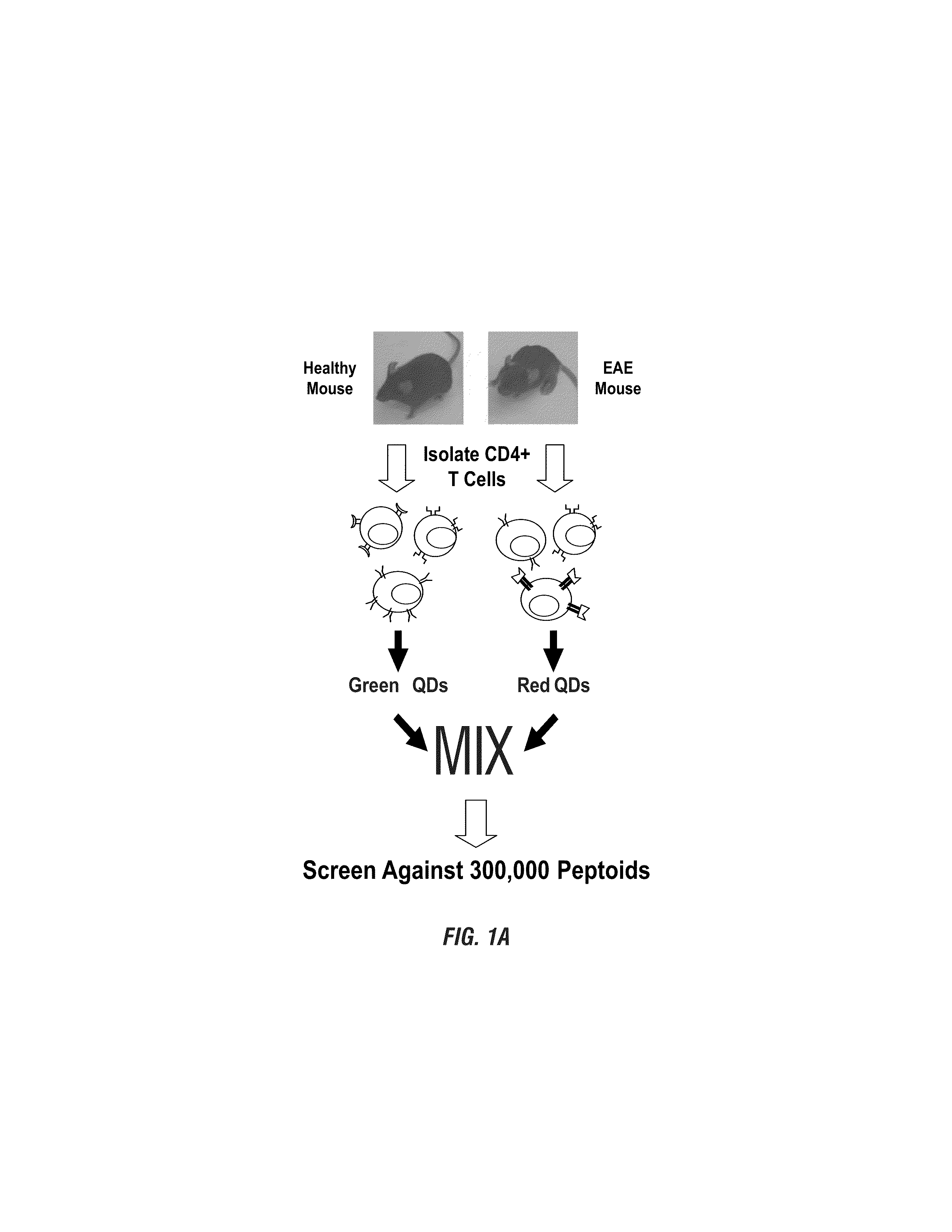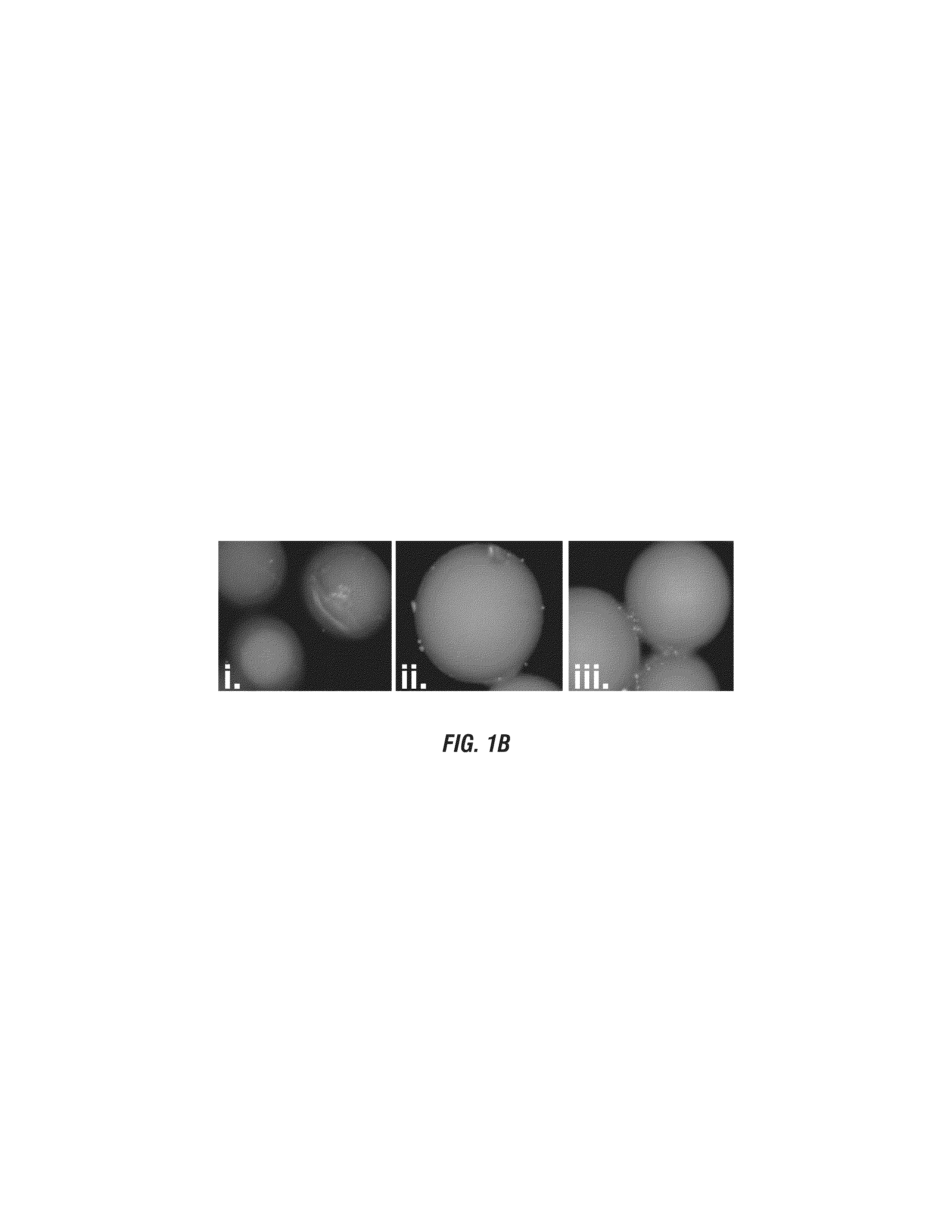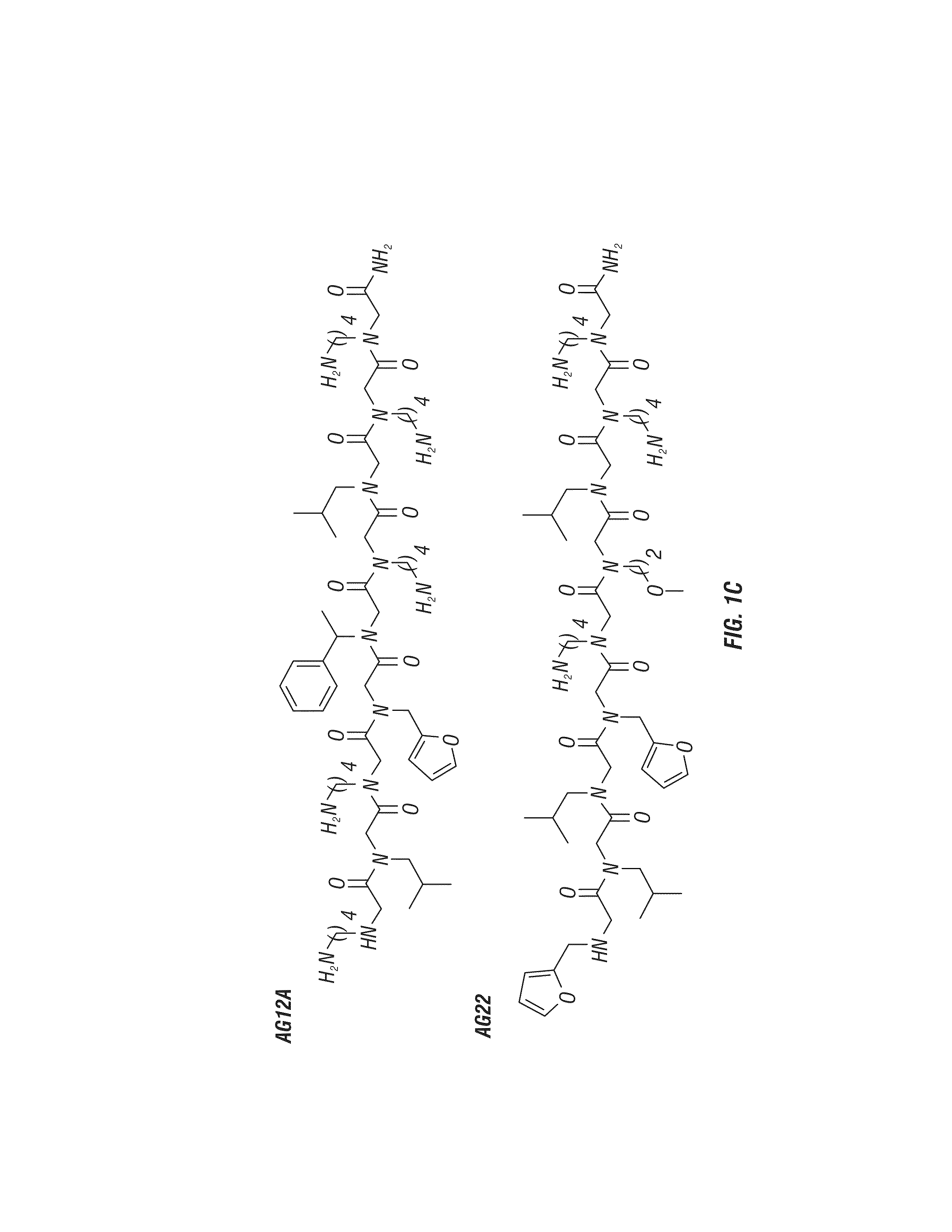Identifying synthetic ligands that bind t-cells from patients having an autoimmune disease
a technology of t-cells and synthetic ligands, applied in the field of molecular biology, immunology and medicine, can solve the problems of no highly reliable serum protein marker for diagnosis of most autoimmune diseases, significant undesirable side effects, and the state of the art in the development of diagnostic agents and effective therapies for autoimmune diseases
- Summary
- Abstract
- Description
- Claims
- Application Information
AI Technical Summary
Benefits of technology
Problems solved by technology
Method used
Image
Examples
example 1
Methods
[0238]Peptoid Library Synthesis.
[0239]Details regarding design of the peptoid library have been published previously (Udugamasooriya et al., 2008). Briefly, the library was synthesized on TentaGel macrobeads (140-170 μM diameter; substitution: 0.48 mmol / g resin; Rapp Polymere). Synthesis of the library was conducted using eight different amines resulting in a theoretical diversity of 262,144 compounds. A 9-mer library was synthesized using a microwave (1000 W)-assisted synthesis protocol and a split and pool method (Olivos et al., 2002). At the completion of library synthesis, beads were treated with a 95% TFA, 2.5% triisopropylsilane, and 2.5% water mixture for 2 hours to remove side chain protection groups and then neutralized with 10% diidoproplyethylamine in DMF. The beads were washed with dichloromethane, dried, and stored at 4° C. until use.
[0240]Resynthesis of Soluble Peptoids.
[0241]Resynthesis of peptoid ligands and scrambled control peptoids was conducted on Knorr am...
example 2
Results
[0262]A Screen for Specific Autoreactive T Cell Ligands in EAE.
[0263]The Multiple Sclerosis (MS) (Noseworthy et al., 2000)-like condition of EAE is induced in genetically susceptible strains of rodents by immunization with myelin proteins or peptides, or by passive transfer of myelin-specific CD4+ T cells (Zamvil and Steinman, 1990). Studies in EAE indicate that myelin-specific CD4+ T cells that have become activated in the periphery, and produce pro-inflammatory cytokines, play a major role in disease pathogenesis of MS (Zamvil and Steinman, 1990). Moreover, these T cells express T cell receptors that are believed to preferentially recognize myelin basic protein in the central nervous system of affected individuals leading to destruction of the myelin sheath and, ultimately, neurological deficit (Zamvil and Steinman, 1990). Therefore, a therapeutic strategy that specifically targets only autoreactive T cells would be interesting to investigate for MS as well as for other T c...
example 3
Discussion
[0276]The inventors have demonstrated here a combinatorial library screening protocol that is capable of yielding synthetic molecules that bind to antigen-specific autoimmune T cells with high specificity. In this study, CD4+ T cells from mice with EAE and CD4+ T cells from healthy control mice were labeled with different colored quantum dots, mixed together, and incubated with a library of approximately 300,000 peptoids displayed on hydrophilic beads (FIG. 1A). The library was created using the split and pool strategy, such that each bead displayed a unique peptoid. Two beads that were observed to bind the red-labeled T cells, but not green-labeled T cells, were isolated. The inventors hypothesis was that the two populations would differ mostly in the presence or absence of a high level of the autoreactive T cells that drive EAE, and thus peptoids that exhibit a preference for cells derived from the EAE mouse would likely be ligands for these autoreactive T cells. Moreove...
PUM
| Property | Measurement | Unit |
|---|---|---|
| molecular weight | aaaaa | aaaaa |
| concentration | aaaaa | aaaaa |
| median time | aaaaa | aaaaa |
Abstract
Description
Claims
Application Information
 Login to View More
Login to View More - R&D
- Intellectual Property
- Life Sciences
- Materials
- Tech Scout
- Unparalleled Data Quality
- Higher Quality Content
- 60% Fewer Hallucinations
Browse by: Latest US Patents, China's latest patents, Technical Efficacy Thesaurus, Application Domain, Technology Topic, Popular Technical Reports.
© 2025 PatSnap. All rights reserved.Legal|Privacy policy|Modern Slavery Act Transparency Statement|Sitemap|About US| Contact US: help@patsnap.com



